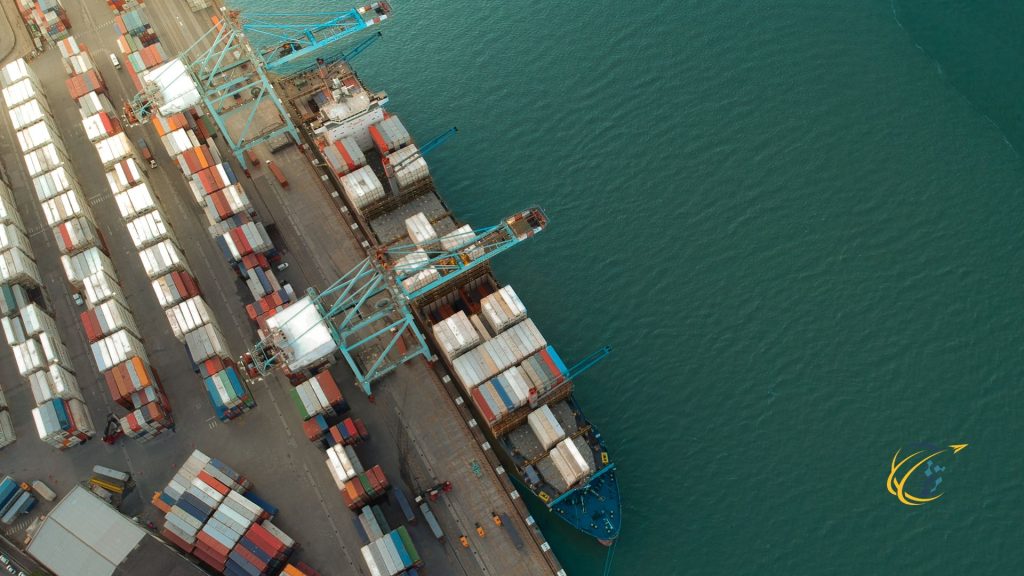In the fast-paced world of commerce, Shipping and Distribution are pivotal to a company’s ability to satisfy customer demand and maintain a competitive edge. These processes ensure that products move efficiently from the manufacturer to the customer. As e-commerce continues to grow, businesses must focus on optimizing this process to meet rising consumer expectations. Effective Shipping and Distribution are more than just logistical tasks. They are crucial components of the supply chain that directly impact customer satisfaction, brand reputation, and profitability.
The Importance of Shipping and Distribution
Shipping and Distribution are the backbone of any successful business. They ensure that products reach customers quickly and efficiently, which is essential for maintaining customer satisfaction. In today’s market, where consumers expect fast and reliable delivery, businesses must prioritize these operations. Efficient Shipping and Distribution not only enhance the customer experience but also build trust and encourage repeat business.
Moreover, effective Shipping and Distribution contribute significantly to cost savings. By optimizing these processes, businesses can reduce transportation costs, minimize delays, and avoid inventory overstocking. These efficiencies translate into lower operational costs and higher profit margins. Additionally, streamlined Shipping and Distribution help companies respond quickly to market changes, ensuring they remain competitive and agile.
Shipping and Distribution also play a vital role in brand reputation. A company’s ability to deliver products on time and in good condition directly affects how customers perceive the brand. Delays, damaged goods, or inaccurate deliveries can lead to negative reviews and loss of customer trust. Conversely, reliable and efficient Shipping and Distribution reinforce a positive brand image, which is crucial in a competitive market.
Key Components of Shipping and Distribution
Shipping and Distribution encompass several key components, each critical to the overall success of the process. The first component is order processing. Once a customer places an order, the Shipping and Distribution process begins. Order processing involves picking, packing, and preparing the order for shipment. This process must be efficient and accurate to ensure that customers receive the correct products in a timely manner. Many businesses use automated systems to streamline order processing, reducing the risk of errors and speeding up the process.
Another important component is transportation management. After an order is processed, it must be shipped to the customer. Transportation management involves choosing the right shipping carriers, negotiating favorable rates, and managing delivery timelines. Businesses must also consider factors such as shipping costs, delivery speed, and reliability when selecting carriers. Effective transportation management ensures that products are delivered on time and at a reasonable cost, which is essential for customer satisfaction.
Inventory management is also a crucial aspect of Shipping and Distribution. Effective inventory management ensures that the right products are available when needed, reducing the risk of stockouts or excess inventory. This process involves tracking inventory levels, forecasting demand, and managing reorder points. Advanced inventory management systems can automate these tasks, providing real-time visibility into stock levels and enabling better decision-making.
Additionally, warehousing plays a significant role in Shipping and Distribution. Warehousing involves storing products in a manner that allows for quick retrieval and order fulfillment. Efficient warehousing reduces lead times, minimizes delays, and ensures that products are ready for shipment when orders are received. Optimizing warehouse layout and design can lead to significant improvements in the efficiency of Shipping and Distribution operations.
Challenges in Shipping and Distribution
While Shipping and Distribution are essential to business success, they also present several challenges. One of the most significant challenges is managing fluctuations in demand. Seasonal spikes, promotions, and unexpected changes in customer behavior can lead to sudden increases in order volume. Businesses must be prepared to scale their Shipping and Distribution operations to meet these demands without compromising accuracy or speed.
Another challenge is dealing with the complexity of managing a global supply chain. Many businesses source products from different parts of the world and sell to customers in multiple regions. This complexity requires careful coordination of inventory, shipping, and delivery across different time zones and regulations. Additionally, global operations often involve dealing with customs, tariffs, and other logistical challenges that can impact the efficiency of Shipping and Distribution.
Rising transportation costs also pose challenges to Shipping and Distribution operations. Fuel prices, carrier rates, and labor costs can all impact the overall cost of shipping. To address these challenges, businesses must continuously seek ways to optimize their transportation strategies, such as negotiating better rates with carriers or exploring alternative shipping methods.
Another significant challenge is managing customer expectations. In today’s market, customers expect fast, reliable, and cost-effective shipping options. Meeting these expectations requires businesses to invest in technology, streamline their processes, and maintain strong relationships with shipping carriers. Failure to meet customer expectations can lead to dissatisfaction, negative reviews, and lost sales.
Best Practices
To overcome the challenges of Shipping and Distribution and achieve operational excellence, businesses should adopt best practices that promote efficiency, accuracy, and customer satisfaction. One of the most important practices is to invest in technology. Automation and advanced software solutions can streamline order processing, inventory management, and transportation, reducing the risk of errors and speeding up operations. By leveraging technology, businesses can also gain real-time visibility into their operations, enabling better decision-making.
Another best practice is to optimize transportation management. This includes negotiating favorable rates with carriers, choosing the most efficient shipping methods, and managing delivery timelines effectively. Businesses should also consider offering customers a range of shipping options, including expedited delivery, to meet varying needs. By optimizing transportation management, companies can reduce shipping costs and improve delivery times, which enhances the overall customer experience.
Efficient inventory management is also critical to successful Shipping and Distribution. Businesses should use advanced inventory management systems to track stock levels, forecast demand, and manage reorder points. Regularly reviewing and adjusting inventory levels can help prevent stockouts, reduce excess inventory, and ensure that products are available when needed. Effective inventory management also helps businesses respond quickly to changes in demand, reducing the risk of delays and improving customer satisfaction.
Additionally, businesses should focus on building strong relationships with their shipping carriers. By establishing reliable partnerships, companies can ensure that their products are delivered on time and at a reasonable cost. Regular communication with carriers, performance monitoring, and ongoing negotiations are essential for maintaining these relationships and optimizing shipping strategies.
Moreover, companies should prioritize customer communication throughout the Shipping and Distribution process. Providing customers with real-time tracking information, delivery updates, and clear return policies can enhance their overall experience. Effective communication also helps manage customer expectations, reducing the likelihood of dissatisfaction and negative reviews.
The Future of Shipping and Distribution
The future of Shipping and Distribution will be shaped by technological advancements, changing consumer expectations, and the need for sustainability. Automation and robotics will continue to play a significant role in improving efficiency and reducing labor costs. Advanced technologies such as artificial intelligence (AI) and machine learning will enable predictive analytics, allowing businesses to forecast demand more accurately and optimize inventory management.
The rise of e-commerce and the demand for faster delivery will also drive innovation in Shipping and Distribution. Same-day and next-day delivery will become the standard, requiring businesses to develop more agile and responsive fulfillment networks. Micro-fulfillment centers, closer to urban areas, will help meet these demands while reducing delivery times.
Sustainability will also become a key focus in Shipping and Distribution. Consumers are increasingly concerned about the environmental impact of their purchases, leading businesses to adopt more sustainable practices. This shift includes reducing packaging waste, optimizing transportation routes, and using energy-efficient warehouse technologies.
Shipping and Distribution are critical components of a successful supply chain, directly impacting customer satisfaction and business performance. By understanding the key components, challenges, and best practices, businesses can optimize their operations and achieve a competitive edge. As the industry evolves, companies must stay ahead of trends and invest in technology, training, and sustainability to meet the demands of the future. With a strategic approach to Shipping and Distribution, businesses can ensure that they deliver on their promises to customers, driving long-term growth and success.


